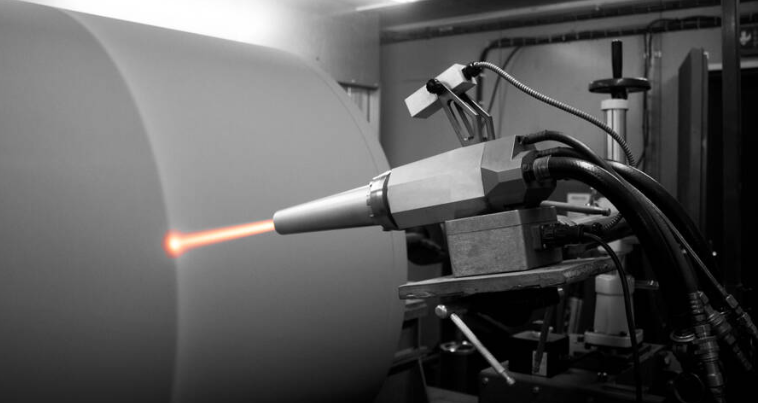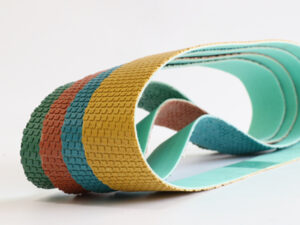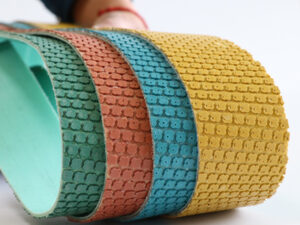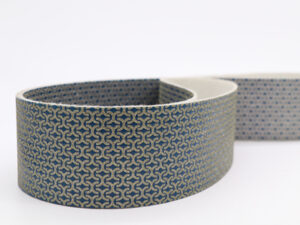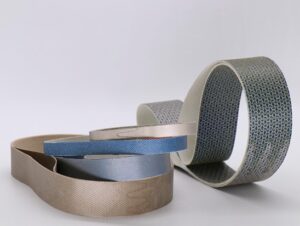Case of resin and electroplated diamond sanding belts for ceramic coating polishing
Resin and Electroplated Diamond Polishing Belts for Ceramic Coating Finishing: Applications, Benefits, and Selection Guide
In aerospace, automotive, and power generation industries, components are often subjected to extreme conditions that demand enhanced surface properties. Thermal spray ceramic coatings have emerged as a solution to improve wear resistance, thermal insulation, and corrosion protection. To achieve optimal performance, these coatings require precise finishing, where resin and electroplated diamond polishing belts play a crucial role.
What Is Ceramic Coating?
Ceramic coatings are protective layers composed of ceramic materials like aluminum oxide (Al₂O₃), chromium oxide (Cr₂O₃), and titanium dioxide (TiO₂). Applied through thermal spray techniques, these coatings enhance the surface properties of substrates, providing benefits such as:
* Wear Resistance: Protecting components from abrasion and erosion.
* Thermal Insulation: Reducing heat transfer to underlying materials.
* Corrosion Protection: Shielding against chemical and environmental degradation.
* Electrical Insulation: Preventing unwanted electrical conductivity.
These coatings are commonly used in applications like turbine blades, engine components, and industrial rollers.
Characteristics of Thermal Spray Ceramic Coatings
Thermal spray ceramic coatings are known for their:
* High Hardness: Providing excellent wear resistance.
* Low Porosity: Ensuring minimal permeability to gases and liquids.
* Strong Adhesion: Maintaining coating integrity under mechanical stress.
* Thermal Stability: Withstanding high operating temperatures.
These characteristics make them suitable for demanding environments where durability and reliability are paramount.
Importance of Polishing in Ceramic Coating Applications
Post-application, ceramic coatings often exhibit surface roughness that can affect component performance. Polishing is essential to:
* Achieve Desired Surface Finish: Reducing roughness to meet specific requirements.
* Enhance Functional Properties: Improving fatigue resistance and reducing friction.
* Ensure Dimensional Accuracy: Maintaining tight tolerances for proper fit and function.
Effective polishing ensures that the benefits of ceramic coatings are fully realized in their intended applications.
Advantages of resin and electroplated diamond polishing belts for ceramic coating polishing
Resin Diamond Polishing Belts
Resin diamond sanding belts are highly effective tools for polishing hard and brittle surfaces such as thermal spray ceramic coatings (like alumina, chromium oxide, or zirconia). These coatings are often applied via plasma or HVOF spraying and require precision finishing due to their high hardness and thermal stability.
Resin diamond polishing belts consist of diamond abrasives bonded with a resin matrix.
Moresuperhard can offer:
* Flexibility: Conforming to complex shapes and contours.
* Smooth Finishing: Producing high-quality surface finishes.
* Versatility: Suitable for both wet and dry polishing.
These belts are ideal for applications requiring fine polishing and are commonly used in industries where precision is critical.
Advantages of Resin Diamond Polishing Belts
* Flexible Yet Durable Backing
* Precision Surface Finishing
* Cool Cutting Action
* Superior Hardness & Abrasive Performance
* Reduced Clogging and Smoother Debris Removal
Resin diamond sanding belts are a high-performance solution for the precision polishing of thermal spray ceramic coatings, combining hardness, flexibility, heat resistance, and consistency. Their application improves surface finish, extends component life, and enhances the reliability of ceramic-coated parts across industries.
Electroplated Diamond Polishing Belts
Electroplated diamond sanding belts are advanced abrasive tools designed for high-precision and high-efficiency polishing of ceramic coatings, particularly thermal spray coatings such as alumina (Al₂O₃), chromium oxide (Cr₂O₃), and zirconia (ZrO₂). These coatings are extremely hard, brittle, and wear-resistant, making diamond abrasives essential for effective material removal and surface finishing.
Electroplated diamond polishing belts feature a single layer of diamond abrasives bonded to the belt surface through electroplating. They provide:
* Aggressive Cutting Action: Efficient material removal rates.
* Durability: Long service life under demanding conditions.
* Consistency: Uniform performance throughout the belt’s lifespan.
These belts are suitable for applications requiring rapid stock removal and are often used in heavy-duty polishing tasks.
Advantages of Resin and Electroplated Diamond Polishing Belts
* Superior Edge Retention and Cutting Sharpness
* Minimal Belt Wear and Dimensional Stability
*Excellent Heat Dissipation
Typical Applications in Ceramic Coating Polishing
* Polishing thermal barrier coatings on turbine blades.
* Surface finishing of ceramic-coated engine or aerospace components.
* Deburring and shaping of plasma-sprayed ceramic parts.
* Fine finishing of insulative ceramic-coated components in electronics or power systems
Electroplated diamond sanding belts offer superior sharpness, grinding efficiency, heat management, and dimensional control, making them an ideal solution for polishing thermal spray ceramic coatings. With their long life, aggressive cutting action, and consistent performance, they outperform conventional abrasives in both rough grinding and fine finishing applications.
Selecting the appropriate belt type depends on the specific requirements of the polishing application.
Selecting the Right Polishing Belt
When choosing between resin and electroplated diamond polishing belts, consider:
* Material Hardness: Harder materials may benefit from the aggressive action of electroplated belts.
* Desired Surface Finish: Resin belts are preferable for achieving finer finishes.
* Component Geometry: Complex shapes may require the flexibility of resin belts.
* Production Volume: High-volume operations might favor the durability of electroplated belts.
Assessing these factors ensures optimal polishing performance and cost-effectiveness.
Recently Moresuperhard received one inquiry about ceramic coating polishing, lets see the Moresuperhard solutions together:
| Bond | Resin bond and electroplated bond diamond polishing belts |
| Size | 50x1200mm |
| Dry/wet polishing | Wet polishing |
| Workpiece | Ceramics, Al2O3 based, TiO2 based, Y2O3 based, Cr2O3 based, ZrO2 based.
Cr2O3 99,2 Other 0,8% max from paper industry; Chrome carbide ,tungsten carbides stainless steel 410 -420 series; Nickel Silicon Boron based Wire with >50% Fused Tungsten Carbide (FTC). The coating results in a hard nickel backed matrix (540 HV0,1) with hard FTC particles (2400 HV0.1) |
| Workpiece diameter | 200-800mm |
Resin and electroplated diamond polishing belts are integral to the finishing process of thermal spray ceramic coatings. By understanding their respective advantages and applications, industries can enhance component performance, extend service life, and achieve desired surface characteristics. Selecting the appropriate polishing belt is crucial for maximizing the benefits of ceramic coatings in various high-demand applications.
—EDITOR: Doris Hu,Sarah Shi
—POST: Doris Hu

